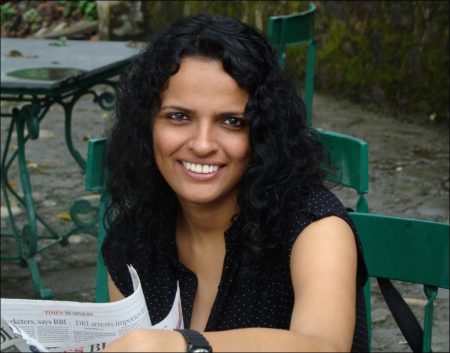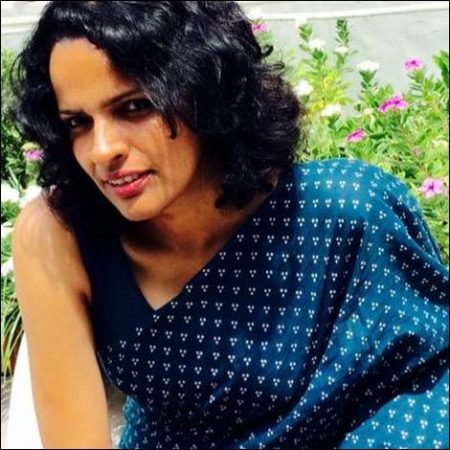
We have interviewed Indian journalist Rama Lakshmi on feminism from the perspective of religious and cultural symbols to the rise of humanrights around the world and of course the feminist movement’s accumulation in the world and in India.
After the terrorist attack in New Zealand, the campaign was launched by women in the country, including the Prime Minister Ardern, wearing a headscarf. Ardern, it is “for the Muslim women in the country to make themselves feel alone,” she said.
While increasing the debate on aggression, ethnic and religious disagreements and their causes; A discussion on the campaign for wearing the headscarf in New Zealand also started. For instance, Masih Alinejad, the initiator of the ‘My Secret Freedom’ campaign that Iranian women shared on social media to protest the photos they took by opening their heads in public spaces, criticized the ‘New Zealand leader and women’s mercy, but it is most visible to women in many countries to show solidarity. using one of the printing tools broke my heart.
Therefore, I also invite them to show us their sisterhood and solidarity with the women who are beaten, imprisoned and punished for struggling against the necessary headscarf. Bu Similarly, Rama Lakshmi, a journalist in India, said in his social media account, ’Why is the turban a symbol of olan solidarity sh for the victims of terrorist attacks in New Zealand?
No better ways? Post-modernism, ‘choice feminism fem (choice feminism: a woman’s individual preferences, by its very nature, claiming that the feminist approach) was created; but one of the main elements of my feminism is to question the shackles that religion imposes on women exclusively m and criticized the expression of turban as a symbol of solidarity in New Zealand.
Based on this critique with journalist Rama Lakshmi, we had a conversation with feminism from the perspective of religious and cultural symbols on the rise of the right in the world and of course the accumulation of feminist movement in the world and in India.
• You have criticized the use of the turban as a symbol of solidarity for the victims of the New Zealand attack, and you have stated that feminism must question that religion imposes religion on women. Why do you think the turban is expressed as a solidarity and sometimes as a symbol of freedom?
As a political symbol, there has been a transformation of the turban over the last few decades, to be viewed as a distinctly anti-women symbol, a cultural challenge. I’m not a Western woman, and as an Indian woman, I know a few things about how culture is unfairly buried on women’s back. As a Hindu woman, I experienced the indifference of culture and religion. But it also caused me to question such hereditary systems at an earlier age.

Long before the introduction of Islamophobia, I learned to treat the turban and its Hindu version li ghoonghat as repressive measures designed to control the female body, sexuality and the lives of women. And there’s no other way to describe them.
Then two things happened. One is adlandır prefer feminism of and the other is called di islamophobia‘. The idea of culturalism or cultural relativism also contributed to the elimination of these criticisms of the turban. All this changed the way the liberal feminists around the world looked at religious / cultural symbols. Some Muslim women, especially in the post-9/11 world, have embraced the turban, and this has become a challenge, cultural insistence and religious freedom.
Although I understand this phenomenon, it is disturbing for me to bless the turban. I don’t need a symbol like a turban to show that I’m not discriminating. Unfortunately, the so-called struggle against Islamophobia has evolved into the fetishization of these symbols and their embracing without questioning.
• At this point, first of all, if you look at the relationship of feminism with religion and religious symbols, what would you say?
Feminism is one of the basic forms of politics and a political and cultural criticism method. For many years I was a religious Hindu and I described myself as a feminist. I questioned the discriminatory approach of religion to women, but I continued to fulfill my religious obligations. Until I understand that the two cannot be together. I believe that religious structures are basically patriarchal and opposed to women.
Religious rituals always give priority to men and push women to supportive positions. I think a feminist should constantly question such hereditary systems. But the feminist movement, of course, should not have discrimination against religious women. Feminism represents all women. Of course we won’t question a turbaned feminist, but we will continue to question the turban. Before examining women’s behavior in this system, we must take the system and criticize it.
• We are faced with the rise of a right across the world, or rather, the rise of neofascism, and this raises the hostility and the racism towards immigrants. Do you think that postmodern identity policies in the face of this can be stopped?
I was in Istanbul in January and went to an exhibition in Taksim. At the Republic Art Gallery in Taksim, Lizzy Mayrl had a beautiful and striking art installation called Bundle. There were dozens on the floor and a mound of colorful headscarves. They belonged to immigrant women. Each headscarf was bundled to represent the baggage that a refugee had taken with him while he was running away. There was an important message to all of us in this exhibition. He asked this question: Is a woman’s life and all her experiences valuable when she becomes visible carriers of customs and religious determinants?
I can say that the postmodern identity policies are presented as a solution on the one hand and at the same time the problem of the rise of the right. Some kind of identity policy almost always brings up another identity policy in the face of a counter-reaction. And I think that the application of these policies should not resort to reactionary rituals that would harm women’s autonomy gained by difficulties.
• We are talking about the rise of the right and also the rise of a world-wide feminist wave. On March 8, millions of women filled streets, squares, and feminist strikes. What do you want to say about the origin of this rebellion rising from different parts of the world?
There is a new feminist wave spreading rapidly in the world. Old ideas and terminology are challenged on the streets and online. The hashtagization of the movements allowed ideas and strategies to become more sustainable and to have a better interaction. A new energy has emerged and has blurred the differences between women worldwide. And this also brought more comprehensive hake of the feminist movement.
The concentration of autocratic power has never been in favor of women in history. One-man regimes will always try to resort to outdated cultural codes and religious policies. But the worst times for women are usually the best time for feminist energies to emerge and explode. It’s just Turkey, India and the US is not valid for the whole world. This situation is keeping us from loosening and forcing us to organize, act and make propaganda. Most importantly, once again, we remember the questioning.
• Is the feminist movement in India parallel with the rise in the world in the context of its demands and actions?
The feminist movement in India is in a general change. A new word and a new threshold are created almost every day in the struggle for freedom. The horrific incident that a gang raped in 2012 created an unprecedented national protest and public opinion. Since then, women’s safety has become an important issue. The legal changes related to the rape offense, after this trigger, opened up new debates about the non-sexual assaults on language: the representation of women on women, the representation of women, the accessibility to places of worship saldır it was the beginning of a new feminist wave rising in rural areas.
Views: 337


